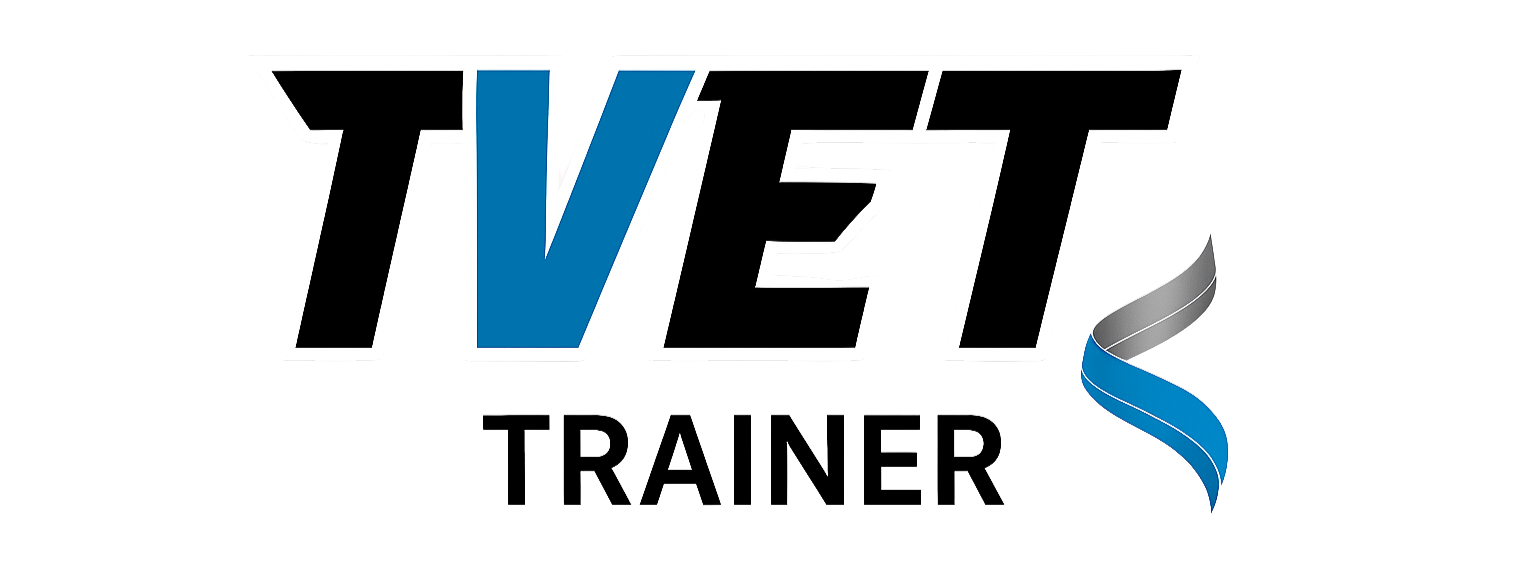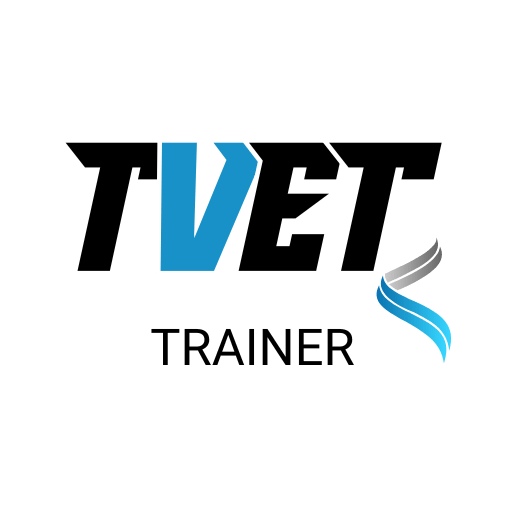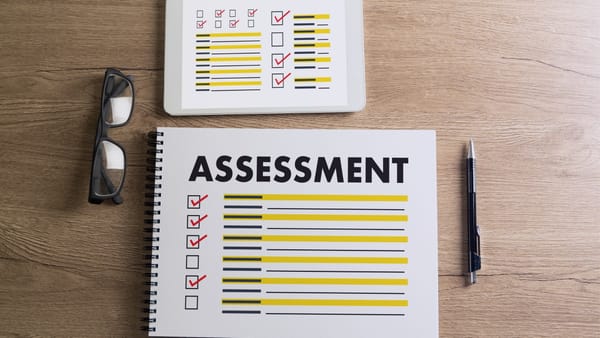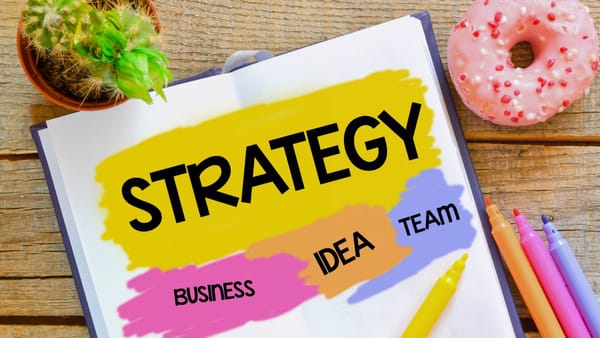The Springboard Workforce Skills Gap Trends 2024: Survey Report, released in January 2024, highlights numerous areas where employers have reported significant skills gaps, which are having a major impact on their businesses.
The vast majority of U.S. companies are underskilled, according to company leaders. 70% of corporate leaders report a critical skills gap in their organisation – one that’s having a negative impact on business performance.
The previous year, the UK government held the Business Connect -Skills for Growth conference (22 June 2023), where it hosted some of the biggest British and international companies to discuss how we can create a workforce fit for the future and address businesses' urgent recruitment needs. In May 2023, according to the Office for National Statistics, there were 1,051,000 job vacancies in the UK. In 2019, 24 per cent of vacancies resulted from skills shortages.
Skills shortages are a global issue, and maintaining a competitive edge requires ensuring the workforce possesses the necessary skills to achieve organisational goals. This is where skills gap analysis comes into play.
Skills gap analysis systematically identifies the difference between an organisation's current skills and the skills it needs to achieve its objectives. Companies can pinpoint areas where employees may lack essential skills by conducting a skills gap analysis and developing strategies to address these deficiencies. This enhances employee performance and productivity and supports strategic workforce planning and development, ultimately contributing to the organisation's success.
This article aims to provide a comprehensive guide to skills gap analysis. We will explore the types of skills gaps and the steps involved in conducting a skills gap analysis. Additionally, we will discuss various methods and tools for assessing skills, strategies for addressing identified gaps, and best practices for ensuring a practical skills gap analysis process. By the end of this article, you will thoroughly understand how to implement skills gap analysis in your organisation and the benefits it can bring.
What is Skills Gap Analysis?
Skills gap analysis is a systematic process organisations use to identify the disparity between the skills their employees currently possess and the skills required to meet the organisation's objectives. It involves evaluating the existing skills within the workforce and comparing them to the skills needed to achieve business goals. This analysis helps organisations to understand where there are deficiencies and to develop strategies to bridge these gaps.
Identifying skills gaps is essential for several reasons:
- Business Performance: Skills gaps can hinder an organisation’s ability to perform efficiently and effectively, directly impacting productivity and profitability.
- Competitive Edge: In a rapidly changing business environment, organisations must ensure their workforce is equipped with up-to-date skills to stay competitive.
- Employee Morale and Retention: By providing professional growth and development opportunities, organisations can address skills gaps and improve employee satisfaction and retention.
Aligning workforce capabilities with organisational goals
By identifying and addressing skills gaps, organisations can ensure that their employees' capabilities are aligned with their strategic objectives. This alignment is paramount for executing business plans successfully and achieving long-term goals.
Employees who possess the right skills for their roles can perform their tasks more efficiently and effectively. Addressing skills gaps through targeted training and development helps enhance employee performance, increase productivity, and achieve better business outcomes.
Skills gap analysis plays a key role in strategic workforce planning. It helps organisations to:
- Identify future skills needed to support growth and innovation.
- Plan for training and development programmes.
- Make informed decisions about hiring and talent acquisition.
Proactively identifying and addressing skills gaps can reduce the costs associated with recruitment and training. Organisations can invest in upskilling and reskilling their current workforce instead of frequently hiring new employees to fill skill deficiencies. This approach can lead to significant cost savings and a more engaged, loyal workforce.
Understanding Skills Gaps
To effectively conduct a skills gap analysis, it's essential to understand the common causes and different types of skills gaps within an organisation.
What is a Skills Gap?
A skills gap refers to the difference between employees' current skills and the skills required to perform their jobs effectively. This gap can occur when employees lack specific abilities, knowledge, or competencies to meet their roles' demands or the organisation's strategic objectives.
Examples of skills gaps:
- Technical Skills Gap: A software development team may need more expertise in a new programming language the company plans to adopt.
- Leadership Skills Gap: A company may find that its managers lack effective leadership skills, hindering team performance and growth.
- Customer Service Skills Gap: Employees in a customer service department might need more advanced communication skills to handle complex customer inquiries and complaints.
Common causes of skills gaps:
Rapid technological advancements can outpace employees' current skills, creating a significant gap between what they know and need to know. As new technologies emerge, employees must continuously update their skills to remain effective. This constant evolution can be challenging for organisations, requiring ongoing investment in training and development programmes.
Shifts in market demands and consumer preferences can also necessitate new skills that the existing workforce may need to possess. As industries evolve and customer expectations change, organisations must adapt by developing capabilities that align with these new demands. This often requires upskilling or reskilling employees to ensure they can meet the market's changing needs.
When a company changes its strategic direction, it may require different skills that are not currently available. Strategic shifts, such as entering new markets or adopting new business models, can highlight workforce skillset gaps. Companies must identify and develop the necessary skills to successfully execute their new strategies and support these changes.
Workforce demographics also play an integral role in skills gaps. An ageing workforce can lose critical skills and knowledge as experienced employees retire. High turnover rates can exacerbate this issue, leading to a continuous cycle of losing valuable expertise and needing to train new employees. Organisations must address these demographic challenges by implementing effective knowledge transfer and succession planning strategies to maintain a skilled and capable workforce.
Types of Skills Gaps
Skills gaps can broadly be categorised into hard skills and soft skills gaps. Each presents unique challenges and requires distinct approaches to address.
- Hard Skills Gaps: Hard skills are specific, teachable abilities or knowledge sets that are often technical. Examples include proficiency in a foreign language, computer programming, or operating machinery. A hard skills gap occurs when employees lack the necessary technical skills.
Example: An accounting department may need more employees proficient in using advanced financial software.
- Soft Skills Gaps: Soft and behavioural skills enable individuals to interact effectively and harmoniously with others. Examples include communication, teamwork, problem-solving, and leadership. A soft skills gap occurs when employees lack these essential interpersonal abilities.
Example: A team may need more effective communication and conflict resolution skills to work on collaboration.
Technical skills vs. non-technical skills gaps:
- Technical Skills Gaps: These gaps relate to specific technical competencies required to perform job functions. They often involve specialised knowledge and abilities.
Example: A manufacturing plant might face a technical skills gap if its workers are not trained to operate new automated machinery.
- Non-Technical Skills Gaps: These gaps encompass broader skills not specific to any one job function but are necessary for overall job performance and organisational success. Non-technical skills can include both hard and soft skills.
Example: An organisation might identify a non-technical skills gap in project management, where employees need more organisational and planning skills to manage projects effectively.
Understanding the different types of skills gaps and their causes is critical for organisations to effectively address them and develop targeted strategies to enhance their workforce capabilities. By identifying whether the gaps are in hard skills, soft skills, technical, or non-technical skills, companies can tailor their training and development programmes to bridge these gaps effectively.
Conducting a Skills Gap Analysis
Conducting a skills gap analysis is a structured process that helps organisations identify where their employees' skills do not meet the business's needs. This process is essential for developing effective strategies to bridge these gaps and ensure the workforce is equipped to achieve organisational goals.
Steps in the Skills Gap Analysis Process
- it difficult to conduct comprehensive skills gap analyses and implement necessary training Organisational Goals and Objectives
The first step in conducting a skills gap analysis is clearly defining the organisation's strategic goals and objectives. Understanding what the organisation aims to achieve in the short and long term is important for determining the skills required to support these goals. This involves collaborating with key stakeholders, including leadership teams and department heads, to align on business priorities and desired outcomes.
- Mapping Out Required Skills for Each Role
Once organisational goals are identified, the next step is to map out the specific skills required for each role. This involves creating detailed job descriptions and competency profiles that outline the essential skills, knowledge, and abilities needed to perform each role effectively. This step helps to establish a benchmark for evaluating current employee skills.
- Assessing Current Skills of the Workforce
After defining the required skills, assessing the workforce's current skills is essential. This can be done through various surveys, interviews, performance evaluations, and skills testing. The goal is to gather comprehensive data on employees' existing skills, competencies, and areas of expertise. This assessment provides a clear picture of the organisation's current capabilities.
- Identifying Gaps Between Current Skills and Required Skills
The final step in the analysis process is identifying the gaps between the workforce's current skills and the skills required to meet organisational goals. This involves comparing the skills assessment results with the skills benchmarks established in the previous steps. Identifying these gaps helps pinpoint areas where training, development, or recruitment efforts are needed.
Methods for Assessing Skills
- Surveys and Questionnaires
Surveys and questionnaires effectively collect data on employees' self-assessed skills and competencies. These instruments can be distributed electronically to quickly and efficiently gather responses from many employees. They provide valuable insights into employees' perceptions of their skills and identify areas for further development.
- Interviews and Focus Groups
Conducting interviews and focus groups allows for a more in-depth exploration of employees' skills and competencies. These methods allow employees to discuss their strengths, weaknesses, and development needs in a more interactive setting. They also facilitate the collection of qualitative data that can complement quantitative survey results.
- Performance Evaluations and Assessments
Performance evaluations and assessments conducted by managers and supervisors provide objective data on employee performance. These evaluations often include ratings and feedback on various competencies and skills, offering a reliable measure of employees' capabilities and areas for improvement.
- Skills Testing and Certification programmes
Skills testing and certification programmes involve administering formal assessments to evaluate employees' proficiency in specific areas. These practical, written, or computer-based tests provide concrete evidence of employees' skill levels. Certification programmes, in particular, validate employees' competencies and ensure they meet industry standards.
- Skills Matrices
A skills matrix is a visual tool that maps out the skills required for different organisational roles and matches them with employees' current skills. This matrix helps to identify skill gaps at a glance and track progress over time. It is a valuable resource for workforce planning and development.
- Competency Frameworks
Competency frameworks define the knowledge, skills, and behaviours required for effective performance in specific roles. They provide a structured approach to evaluating and developing employees' competencies. They are a reference for assessing current skills and planning future development initiatives.
- HR Analytics Software
HR analytics software uses data analysis and reporting tools to assess and track employee skills and competencies. These platforms can integrate data from various sources, such as performance evaluations, training records, and survey results, to provide a comprehensive view of the workforce's capabilities. HR analytics software enables data-driven decision-making and helps organisations identify trends and patterns in skills gaps.
Addressing Skills Gaps
Once a skills gap analysis identifies areas where the workforce lacks necessary skills, the next step is to develop and implement strategies to address these gaps. This involves creating targeted interventions to enhance employees' skills and ensure they align with organisational needs.
Strategies for Closing Skills Gaps
- Training and Development programmes: Implementing structured training and development programmes is one of the most effective ways to address skills gaps. These programmes can include workshops, seminars, online courses, and on-the-job training tailored to specific skill needs.
Example: A company might offer coding boot camps to upskill its software development team in new programming languages and technologies.
- Hiring and Recruitment Strategies: Sometimes, the best way to address a skills gap is to recruit new talent with the required skills. This involves adjusting recruitment strategies to attract candidates with specific competencies.
Example: An organisation might revise its job postings to highlight the demand for expertise in data analytics and focus on recruiting candidates with strong analytical skills.
- Internal Mobility and Career Development: Promoting internal mobility and providing career development opportunities can help bridge skills gaps by allowing employees to move into roles where their skills are needed and encouraging them to acquire new skills.
Example: A company might establish a career development programme that includes job rotation, allowing employees to gain experience in different departments and develop a broader skill set.
- Mentoring and Coaching: Mentoring and coaching programmes pair less experienced employees with more experienced colleagues to facilitate knowledge transfer and skill development. These relationships help employees quickly develop the skills they need.
Example: A marketing firm might implement a mentoring programme where junior marketers are paired with senior marketing strategists to learn advanced marketing techniques and strategies.
Measuring Effectiveness
- Key Performance Indicators (KPIs): KPIs are quantifiable measures used to evaluate an organisation's or employee's success in meeting objectives. When addressing skills gaps, KPIs can help track the effectiveness of training programmes and other interventions.
Example: KPIs for a skills development programme include the number of employees completing training, improvements in performance metrics, or productivity increases.
- Regular Reassessment and Adjustment: Continuous reassessment of the workforce's skills and the effectiveness of strategies to address skills gaps is essential. Regularly evaluating progress and making necessary adjustments ensures that the organisation remains on track to close skills gaps effectively.
Example: An organisation might conduct quarterly skills assessments to monitor the progress of employees who have undergone training and adjust the training programmes based on the assessment results.
Addressing Challenges
Addressing skills gaps effectively requires overcoming challenges and adhering to best practices to ensure successful analysis and interventions. One of the most common challenges is resistance to change. Employees and managers may resist new technologies, processes, or shifts in job responsibilities, which can hinder the implementation of skills gap analysis and subsequent training programmes. To overcome this resistance, organisations should communicate the benefits of addressing skills gaps, involve employees, and provide support throughout the transition.
Limited resources are another significant challenge. Budget, time, and personnel constraints can make it difficult to conduct comprehensive skills gap analyses and implement necessary training programmes. Organisations should prioritise critical skills gaps and allocate resources accordingly to address this. Cost-effective solutions can also be employed, such as online training platforms or partnerships with educational institutions.
Keeping up with rapid technological changes presents an ongoing challenge. The fast pace of technological advancements can lead to a continuous cycle of skills obsolescence. Organisations should adopt a proactive approach to skills development by regularly assessing future skills needs, staying informed about industry trends, and integrating continuous learning opportunities into the organisational culture.
Adhering to best practices can significantly enhance the effectiveness of skills gap analysis. Involving stakeholders from all levels of the organisation ensures a comprehensive analysis that considers multiple perspectives. Engaging executives, managers, and employees can lead to more accurate identification of skills gaps, greater buy-in, and more effective implementation of training programmes.
Using data-driven approaches provides objective insights into skills gaps and the effectiveness of interventions. Performance data, employee surveys, and other relevant metrics allow for more informed decisions. Data-driven approaches enhance the accuracy of the skills gap analysis and help track progress over time, enabling more effective strategies.
Ensuring ongoing monitoring and evaluation is necessary. Continuously assessing the skills gap analysis process and its outcomes allows organisations to adapt to changing needs and improve the effectiveness of their interventions. A regular review cycle, such as quarterly or biannual skills assessments, ensures that skills development initiatives remain relevant and aligned with organisational goals.
Developing a culture of continuous improvement and learning encourages employees to take ownership of their skills development and stay current with industry trends. Promoting a learning-oriented culture enhances employee engagement, retention, and organisational adaptability. Providing employees with access to various learning resources, such as online courses, workshops, and mentorship programmes, and encouraging them to set personal development goals can support this culture.
By addressing common challenges and adhering to these best practices, organisations can conduct more effective skills gap analyses and implement strategies that enhance workforce capabilities and support long-term success.
Conclusion
In conclusion, organisations must address skills gaps to maintain competitiveness and achieve their strategic goals. The Springboard Workforce Skills Gap Trends 2024: Survey Report underscores the significant impact of skills deficiencies on business performance, with 70% of U.S. corporate leaders recognising critical gaps within their organisations. Companies can identify and bridge these gaps by conducting a thorough skills gap analysis, enhancing employee performance, productivity, and overall organisational success. Implementing targeted strategies such as training programs, hiring adjustments, and promoting a culture of continuous learning can effectively address these gaps. Overcoming challenges like resistance to change and limited resources is key, and adhering to best practices ensures that skills development initiatives remain relevant and practical. A proactive and systematic approach to skills gap analysis and management is essential for promoting a skilled, adaptable, and competitive workforce.
FAQs
- What is skills gap analysis, and why is it important in 2025? Skills gap analysis is a systematic evaluation of the difference between an organisation's current workforce skills and those required to meet strategic objectives. It is crucial in 2025, as 70% of U.S. corporate leaders report critical gaps impacting performance, with rapid technological changes exacerbating shortages in digital and data skills.
- What are the main types of skills gaps in organisations? Skills gaps are categorised into hard skills gaps, such as technical proficiencies in programming or financial software, and soft skills gaps, like communication and leadership. Technical gaps often arise from technological advancements, while non-technical ones stem from broader needs like project management.
- How do you conduct a skills gap analysis step by step? Conduct a skills gap analysis by first defining organisational goals, mapping required skills for roles, assessing current employee competencies via surveys or tests, and then identifying discrepancies to inform targeted interventions, ensuring alignment with future needs like those projected in the World Economic Forum's Future of Jobs Report 2025.
- What strategies can address skills gaps effectively? Effective strategies include tailored training programmes, strategic hiring for specialised roles, internal mobility through job rotation, and mentoring to facilitate knowledge transfer—tools like skills matrices and HR analytics aid implementation to close gaps in high-demand areas like data analysis.
- What are the latest skills shortages in the UK for 2025? In 2025, the UK faces acute shortages in digital skills, which could risk 380,000 jobs and cost £27.6 billion by 2030. This issue is compounded by shortages in engineering and IT roles, with 76% of employers struggling to fill vacancies despite a slight narrowing of the overall skills gap from 80% in 2024.







